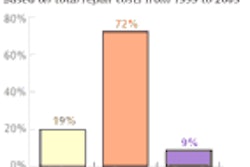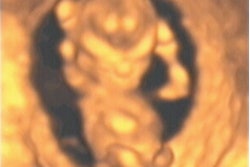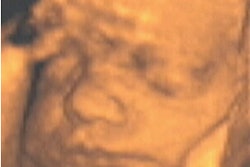PocketRadiologist:
Obstetrics: Top 100 Diagnoses PDA software - Pocket PC by Paula J. Woodward, Anne Kennedy, and Roya Sohaey
Elsevier Science, St. Louis, 2003, $79.95
Quick and comprehensive references are needed while on-call and during the normal working day. This CD-ROM is the perfect solution, offering high-yield information without the inconvenience of a cumbersome book.
Within each diagnosis, navigation is easy. The information and images load effortlessly and with little delay. The software requires only three megabytes of storage space, and it works equally well from a storage card or from the Pocket PC’s main memory. There also is a feature that allows the user to add notes.
Each diagnosis has a screen for clinical issues, differential diagnosis, imaging findings, key facts, pathology, and references. Additionally, one screen is included for each of two high quality images that accompany a particular diagnosis. The images provided are predominately sonograms, however some diagnoses have artist renditions, Doppler ultrasound images, MR images, and 3-D ultrasound surface-rendered images.
The section on clinical issues provides pertinent historical information, as well as treatment information for each diagnosis. There is a good description of both common and obscure findings. Within this screen, there is a "best imaging clue" for most diagnoses. Key epidemiological, histological, and pathophysiological information is also included for each diagnosis.
There are particularly good discussions on placental and cervical anomalies. Common chromosomal anomalies and rare syndromes are also included. A practical outline correlating Beta-HCG quantitative serum and ultrasound findings is provided, as well as a useful discussion on using serum progesterone levels to predict normal intrauterine pregnancy versus spontaneous abortion and ectopic pregnancy.
Although the images are of high quality, there are only two per diagnosis. More diagnostic images -- instead of artist’s renderings in some cases -- would have been helpful. Also, most medical PDA software titles have a search option, which this one lacks. Instead, the user is forced to scroll through the collapsible outline structure.
Another drawback of this software series is the price, which makes owning each of the fifteen different titles nearly prohibitive for the average radiology resident. However, technical support is excellent: My copy had the wrong registration codes, and within one day of e-mailing technical support, new codes were provided.
By Dr. Peter Angelo RosellaAuntMinnie.com contributing writer
February 24, 2004
Dr. Rosella is a radiology resident at the University at Buffalo Graduate Medical Consortium in Buffalo, NY.
The opinions expressed in this review are those of the author, and do not necessarily reflect the views of AuntMinnie.com.
Copyright © 2004 AuntMinnie.com



















